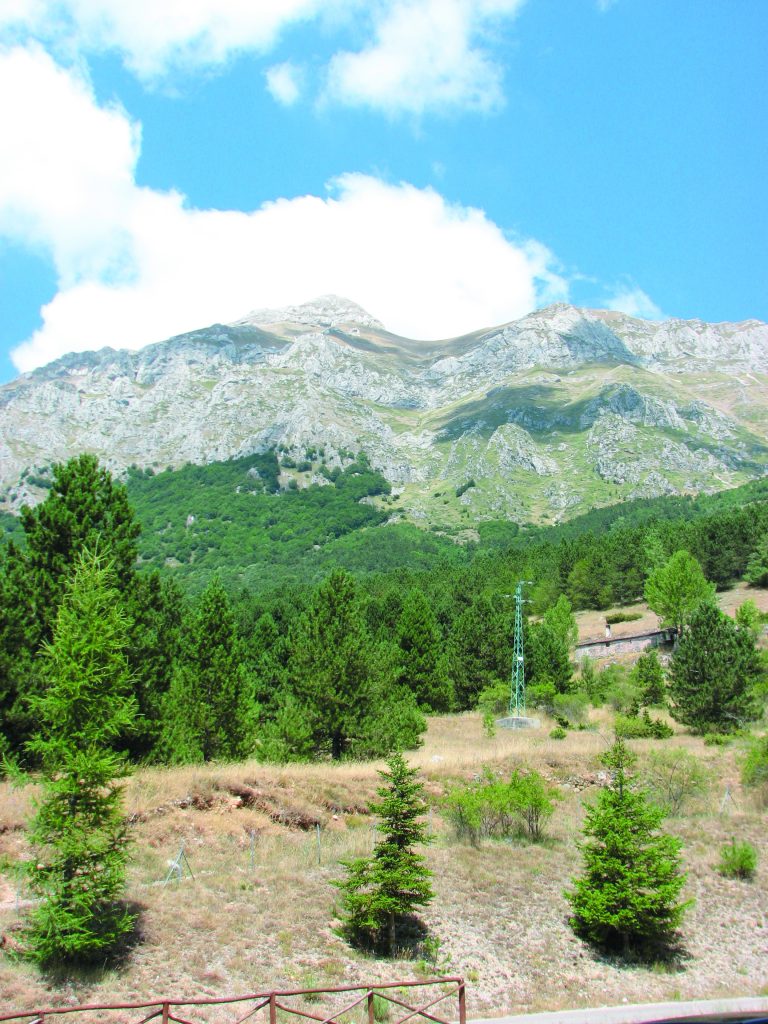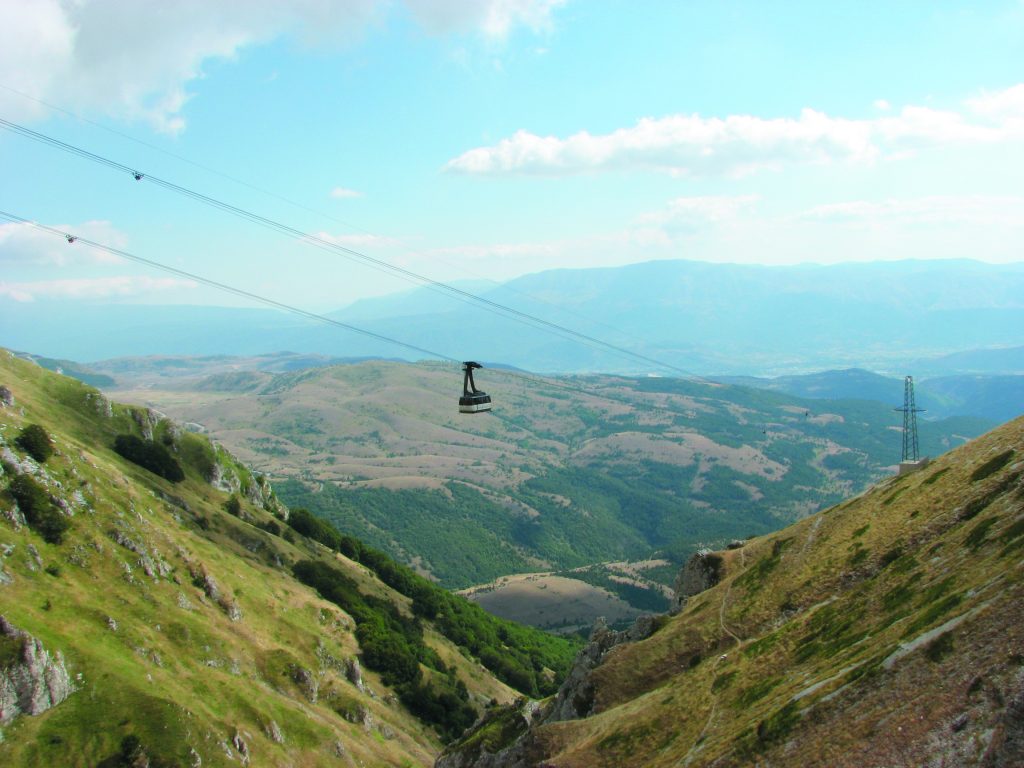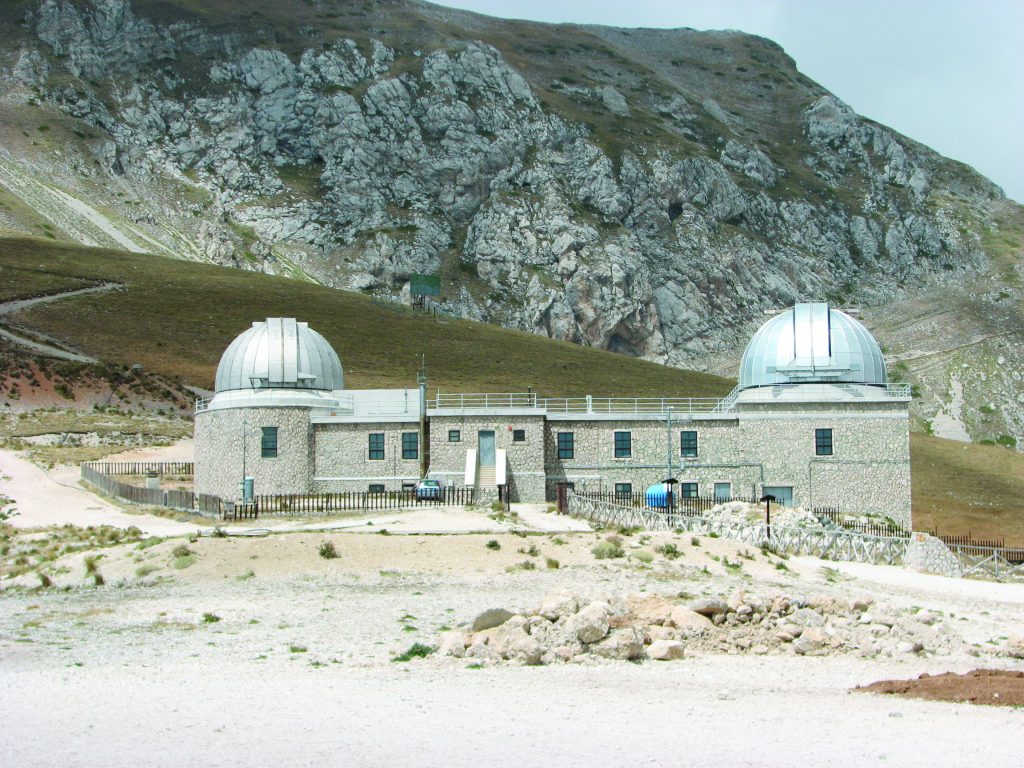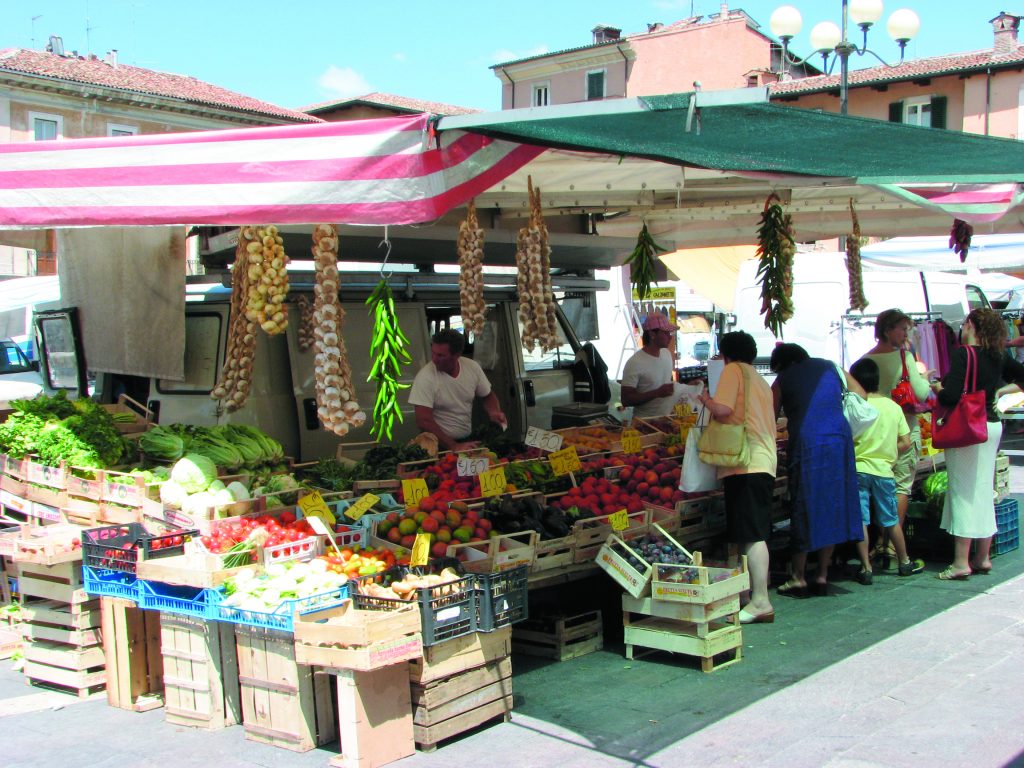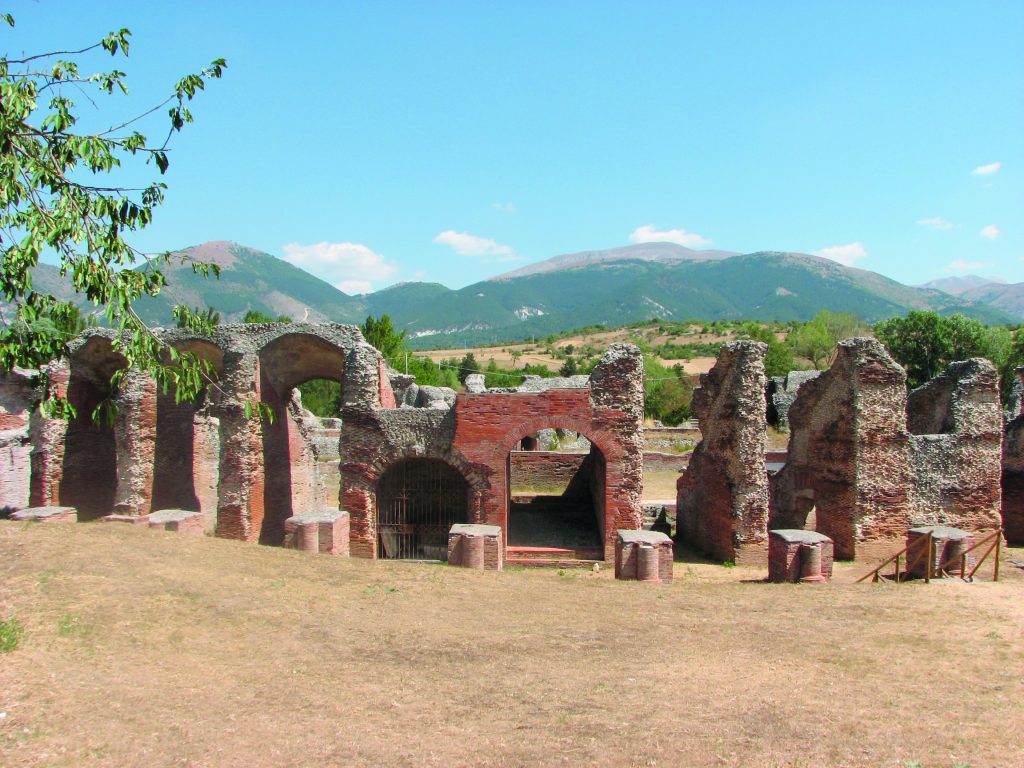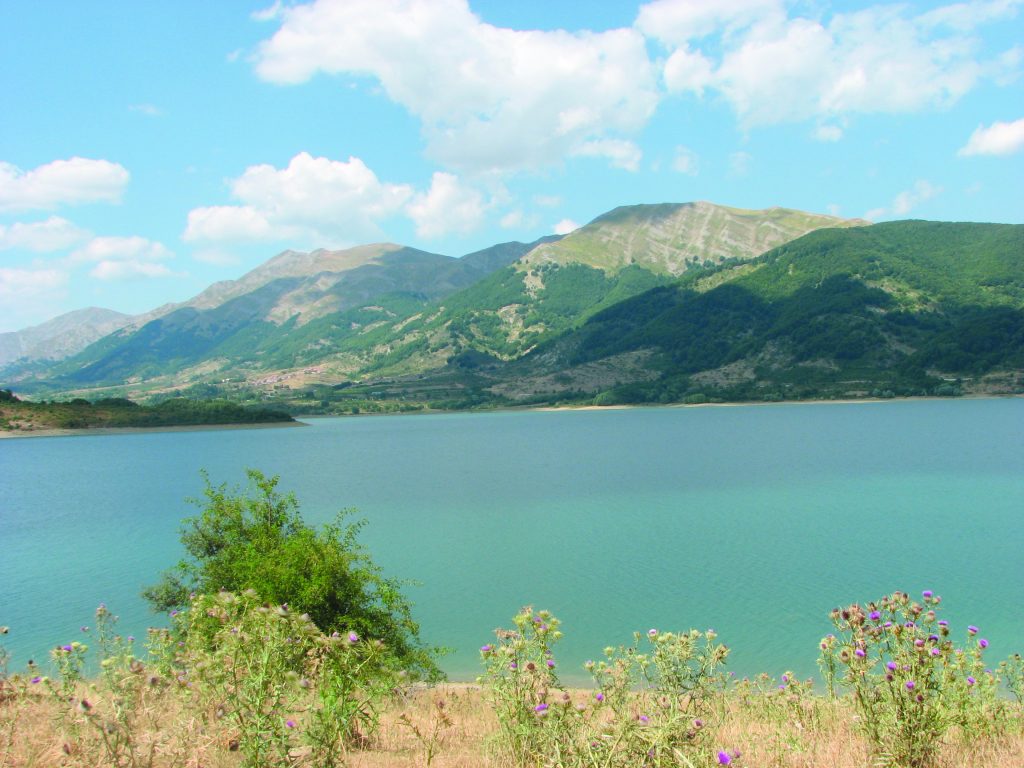Sarah Lane heads to Abruzzo to explore the noble city of L’Aquila and the surrounding Gran Sasso National Park, an area of stunning natural beauty, wildlife and good-tempered sheep.
The medieval city of L’Aquila has a remarkable setting amid the high mountains of the Apennines in inland Abruzzo. With a self-sufficient character and persistent links to its unusual past, it’s a fascinating place to visit. The Gran Sasso-Monti della Laga National Park, which all but surrounds L’Aquila, is a wild and ruggedly beautiful area. The name of the city, L’Aquila, means the eagle in Italian, and golden eagles as well as many other birds of prey, wolves, deer and even bears live here. In reality, though, the name has nothing to do with the regal bird, but derives from the former name, Aquili, given to the city because of the numerous freshwater springs found here. Through the ages the name has been transformed, and thanks to its position perched high on a plateau (714m asl) the city has now become The Eagle, which is also the local symbol.
My partner Malaga and I approached L’Aquila from the east and after endless summer traffic along the Adriatic coast, the looming majesty of the Gran Sasso mountains was refreshing. Soon, though, the road plunged into a long tunnel under the mountains themselves, emerging the other side into the outskirts of L’Aquila. It’s a small city with a compact historic centre. Driving around the centre is not the best way to explore, so we parked at our hotel – the delightful Hotel Sole – and set out for a first taste of L’Aquila. Sunday morning calm enveloped the central streets and the café terraces on the impressive expanse of Piazza Duomo, the centre of city life. Having missed breakfast, we were drawn by the fragrant aromas at the Antico Forno San Biagio bakery across the square and soon were sinking our teeth into fresh focaccia.
After a short stroll we postponed further exploration until later and hopped back into the car, hoping to make it to the nearby plateau of Campo Imperatore in time for the summer sheep fair. Opting for the cable-car ride instead of driving up the mountain road – only open in summer – we stopped at Fonte Cerreto. This was the place to be, it seemed. People milled around the wooden chalet shops and the various bars and restaurants. There were signs too of the sheep fair and we actually saw one woolly animal eyeing us imperiously from the safety of a parked jeep!
Reaching the heights
By the time we reached Campo Imperatore at 2,130m, however, the fair was over and we were greeted by a chilly breeze. Here, on the open plateau, the landscape is bleak, but it makes an excellent base for walkers in summer and skiers in winter. Near the cable-car station there’s an astronomical observatory and an alpine botanical garden, but what dominates is the imposing Hotel Campo Imperatore. You can visit the rooms where Mussolini was imprisoned in 1943, with the original furnishings of the time. There are also a few photographs of the daring escape he made, rescued by a small Nazi plane that snatched him up from the mountainside.
Without the time to set off on one of the many walking trails, let alone to reach the Corno Grande peak – five hours there and back – but feeling the need to stretch our legs, we decided to walk down the mountain instead of taking the cable car. The route was straightforward, we were told, more or less following the cable car, and should take anything between 40 and 90 minutes. We didn’t seem to go particularly slowly, but it actually took us two and a half hours! The steep and slippery stony terrain caused us both a couple of days’ leg ache, but it was worth it to see the panoramas open out as we descended, offering fantastic views from the peaks to the lowlands below.
The following morning we set off to explore the city. First on the itinerary was San Bernardino, although we had already had a tantalising glimpse of the gleaming white façade from the hotel’s roof-terrace breakfast room. Built in the mid-15th century, San Bernardino has the rectangular façade and rose window typical of L’Aquila’s churches. In a commanding position at the top of a long, wide flight of steps leading down to the lower part of town, San Bernardino cuts a fine figure. The interior, measuring nearly 100m, is no less impressive with its gilt-covered wooden ceiling and graceful chapels.
Around the back of the church, in the former monastery building, we popped in to visit one of the most prestigious local ceramics makers. Ceramiche San Bernardino (Via Veneto 5) specialises in the traditional technique of engraved ceramics, working on numerous personalised commissions, but also making pots and plates on sale to the public. Another local craft is copperwork, and later on we saw some lovely copper items on sale at the market.
Thriving markets
With the market in full swing, Piazza Duomo had a completely different atmosphere from its Sunday calm. Being a diehard vegetarian, the fruit and vegetable stalls drew my eye – particularly the rows of juicy chilli peppers. In Abruzzo, unlike much of Italy further to the north, the peppers really are spicy and I made the most of them during my stay.
There were also plenty of other stalls – clothes, shoes and hardware, as well as meat, cheese and fish, and even a couple of stalls selling nothing but eggs. We later discovered there was a popular local dish involving eggs, lamb, cheese and lemon, although we didn’t get to try it.
Many of the area’s main products come from sheep, which have been vital to the local economy for centuries. Wool has been a useful local resource through the ages, and appetites have always been sated with all sorts of dishes made with meat or cheese from the flock. Travelling through the area, large flocks of sheep and goats are a common sight.
Another important local product is saffron. The plant is grown on the Navelli plateau not far from L’Aquila. The precious crocus-type flowers are picked each autumn, early in the mornings before the flowers are fully open for the day to ensure that none of the aroma has dispersed into the atmosphere. The local co-operative, which counts nearly 90 members, fixes the price for saffron each year and ensures standards are maintained, the emphasis being on quality not quantity. L’Aquila has been making money from this lucrative but delicate crop since the city was founded in the mid-13th century.
Foundations
The story of the city’s foundation involves the populations of 99 local castles getting together to form a unit, via which they could develop trade and market saffron and wool. Each castle was granted a plot of land with its own piazza, fountain and church – hence the large numbers of all three to be found in L’Aquila today. To promote unity, features such as the fountain of the 99 spouts were installed. This attractive sunken square has fresh and inviting but non-drinkable water spurting out on three sides. It is said to be a few spouts short of the 99, but I didn’t count them!
Santa Maria di Collemaggio Basilica, the city’s major sight, also dates back to the 13th century and shares the fountain’s pink and white masonry. Building work began in 1287, at the initiative of Pietro da Morrone, who was to be made pope here just seven years later even before the structure was completed. The full pardoning of sins he granted to all at the time of his enthronement continues to be relived annually in the midst of a lively festival – an event which even in the Vatican only occurs every 100 years. Pietro, who became known as Celestine V, wasn’t cut out to be pope in that day and age, however, and abdicated after just a few months, unable to cope with the politics and corruption of the time.
During this period, and for the next 200 or so years, L’Aquila thrived economically and culturally, but with the arrival of the Spanish in 1528 the city was doomed to decline. Having backed the wrong horse – the French over the Spanish – local residents were punished by having to pay heavy duties to finance the building of an ambitiously designed fortress, which, never having been needed for military campaigns, is in good condition today.
As it was a Monday and the castle museum was closed, we decided to head out of town and explore some of the medieval villages on the southern slopes of the Gran Sasso. Having been acquired by the Florentine Medici family as a base for their wool industry in the 16th century, then largely abandoned by subsequent residents around the start of the 20th century, Santo Stefano di Sessanio and Rocca Calascio with its landmark hilltop fortress, have been inspiring interest in recent years. Santo Stefano has been the subject of a project to return the village, as far as possible, to its original form, using techniques, materials and furniture of the time in a unique hotel, and opening historic workshops where you can watch ancient crafts being practised.
On our way back down the hill to L’Aquila we surprised a group of wild boar crossing and an owl sitting in the middle of the road, but were soon back in the town centre, which was as busy as it had been that morning.
Remains of the day
Our final foray out of L’Aquila the following day took us a few kilometres north to Amiternum, where some Roman remains lie casually in the fields. You can see the theatre from the road, but the open gate to the amphitheatre means visitors are free to wander. Other ruins lie beneath the surface, awaiting funds for excavation.
Heading north, we made our way to Lake Campotosto. Having been told that it was very popular in the summer, particularly among water sports enthusiasts, we’d been expecting to find a place humming with activity. Far from it. The large, deep blue lake set against a backdrop of mountains was a haven of tranquillity. Stopping just beyond the lake, however, to photograph a flock of sheep and goats, I was woken from my tranquil reverie as a couple of serious-looking sheep dogs had spotted me approaching their charges. I beat a swift retreat to the car.
What I found most surprising in and around L’Aquila was the complete naturalness of the locals and the landscapes. Nothing special or gimmicky is laid on for visitors to the area and, in fact, one local resident, surprised at the reason for our visit, said to us: “But do people come here on holiday? Why would they want to do that?” This nonchalant attitude towards tourism is a great part of the charm, and locals and tourists alike are treated with appealing spontaneity.
I put the lady straight as to why people would want to come to L’Aquila on holiday, though. It’s a beautiful, noble city, which is full of culture, great food and wine, all linked to its fantastic natural surroundings and that unbeatable mountain skyline of Gran Sasso. n!

